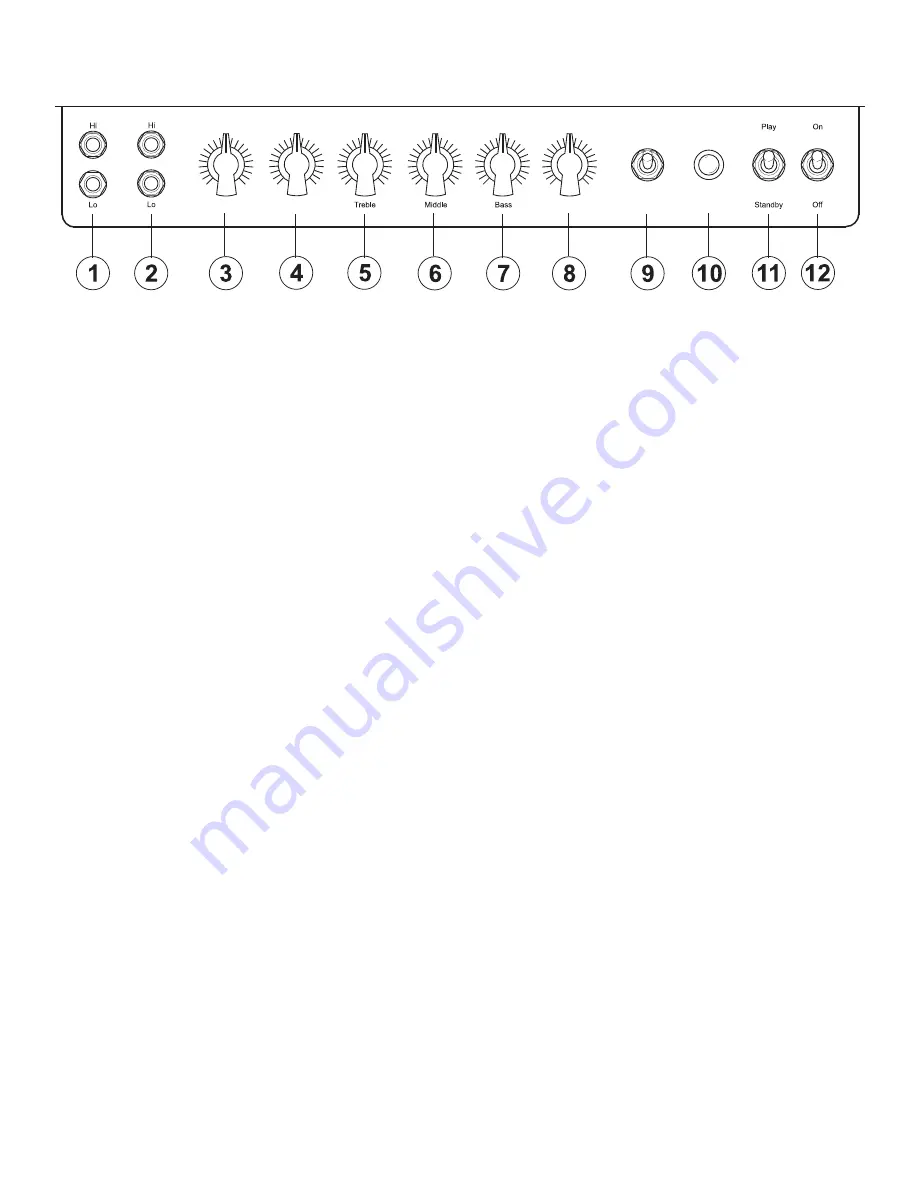
Page: 7
Front Panel: Controls And Features
1 • Inputs For Channel 1:
These are the high and low impedance inputs for channel 1. Chan-
nel 1 uses an EF86 as the preamp tube and bypasses the tone controls.
2 • Inputs For Channel 2:
These are the high and low impedance inputs for channel 2. Chan-
nel 2 uses a 12AX7 as the preamp tube and uses the tone controls.
3 • Volume 1:
This control determines the overall loudness of the amplifier when the instru-
ment is plugged into channel 1. As the volume control is rotated towards maximum the
amp will become not only louder but rich harmonic overtones will mix with the tone as
well.
4 • Volume 2:
This control determines the overall loudness of the amplifier when the in-
strument is plugged into channel 2. As the volume control is rotated towards maximum
the amp will become not only louder but rich harmonic overtones will mix with the tone as
well.
Note:
Channel 1 and Channel 2 are out of phase with each other and can not be jumper’d as
a player might do with some other 4 input amplifiers.
5 • Treble:
This control determines the amount of treble frequencies present in the ampli-
fier tone. At the maximum setting the amplifier is at it’s brightest. This control also adds
a bit of bite to the amplifier as it is turned towards maximum. This control does not affect
the tone of channel 1.
6 • Middle:
This control determines the amount of mid frequencies present in the amplifier
tone. The mid control effects are less dramatic than the treble and bass controls and tend
to soften the overall amp tone as the control is turned towards the maximum setting. It
should also be noted that as the middle control is turned towards the maximum setting the
player will notice that the treble and bass controls have less effect on the overall tone. This
control does not affect the tone of channel 1.
Oldfield Marquis Thirty
Pentode
Triode
Top Cut
1
2
Volume 1
Volume 2





























